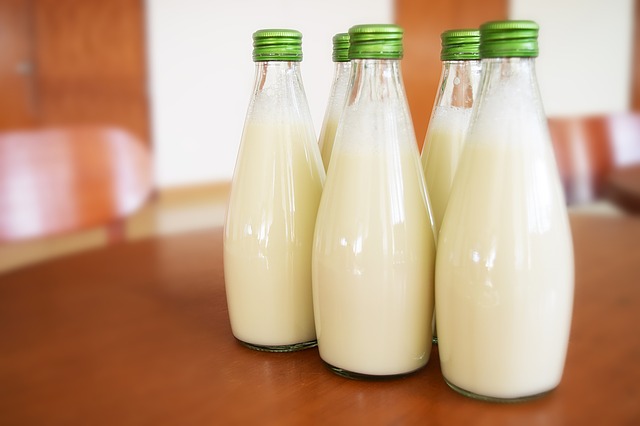Have you ever wonder the difference between skim milk vs fat-free milk? The dairy section at the grocery store can be a very confusing place. Just think of all the varieties or names of milk available. Some of these include whole milk, vitamin D, 2%, 1%, 0%, lactose-free, low-fat, fat-free, skim, organic, shelf-stable, and so on. People often wonder if skim milk is the same as fat-free milk given that they are often assumed to be one in the same. But, are they really the same?
Fat-Free vs Skim Milk
The U.S. Food and Drug Administration (FDA) is responsible for regulating how foods are labeled according to their ingredients. The FDA defines skim milk as being the same as nonfat milk (fat-free). There is not a difference between fat-free milk and skim milk. Rather, it is a matter of how the manufacturer chooses to market the milk as fat-free, skim, or another FDA approved variation. Other names that fat-free or skim milk might reflect on their labels are zero fat, without fat, and free of fat.
Does Fat-Free Really Mean No Fat?
While milk may be labeled as fat-free, it is not necessarily totally free of fat. The FDA criteria for labeling milk indicates that the product must have less than 0.5 grams of total fat per labeled serving. Additionally, fat cannot be added unless the label ingredients clearly indicate the fat source with verbiage stating that the fat source ingredient adds to the fat content. Essentially, it is likely that you will consume a minimal portion of fat even when drinking fat-free or skim milk.
Why Drink Skim Milk?
One cup of skim milk contains about only 85 calories with 8 grams of protein. The sugar is a natural sugar (lactose) with about 12 grams per cup. You will receive about 30 percent of your recommended calcium, approximately 20 percent of vitamin D, and about 10 percent vitamin A from a cup of skim milk.
While skim milk may be the goto type of milk for dieters, there have been studies conducted that link skim milk to weight gain. It is believed that skim milk does not adequately satisfy hungry in some people. This causes them to seek out additional food to fill the void. Higher fat milk is believed to curb extra food cravings, which extends time between meals or snacks. However, none of this matters if calorie intake can be controlled.

